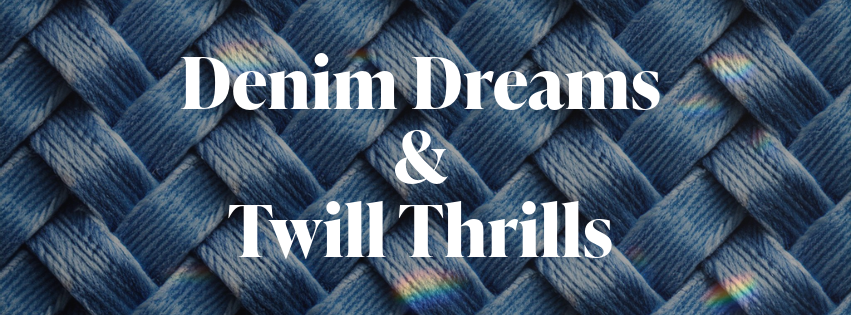Unveiling the Secrets of Denim and Twill
Denim and twill fabrics are popular choices in the textile industry, each boasting unique characteristics that make them suitable for various applications.
TEXTILE INFORMATIVE
7/1/20242 min read


What is Twill Fabric?
Twill is a type of weave that produces a diagonal pattern, known as a twill line, on the fabric surface. This weaving technique involves passing the weft thread over one or more warp threads, then under two or more warp threads in a repeating pattern. The result is a sturdy fabric with a distinct diagonal ribbing.
Key Characteristics of Twill:
Diagonal Weave: The most noticeable feature of twill is its diagonal weave pattern, which adds visual interest and texture.
Durability: Twill fabrics are known for their strength and durability, making them suitable for heavy-duty applications.
Wrinkle Resistance: Twill resists wrinkling better than plain-weave fabrics, maintaining a neat appearance with minimal effort.
Softness: Despite its strength, twill fabric has a soft texture, offering comfort for garments and upholstery.
Common Uses:
Twill fabrics are versatile and used in a variety of applications, including:
Clothing: Chinos, jackets, and workwear often feature twill fabric due to its durability and comfort.
Home Textiles: Twill is a popular choice for upholstery, curtains, and bed linens because of its strength and attractive texture.
Accessories: Twill is also used in making bags, hats, and other accessories that require a durable yet flexible material.
What is Denim Fabric?
Denim is a type of twill fabric made from cotton, characterized by its blue color and sturdy construction. The traditional denim weave involves a blue indigo-dyed warp thread and a white weft thread, creating the iconic blue-and-white diagonal pattern.
Key Characteristics of Denim:
Durability: Denim is exceptionally strong and long-lasting, making it ideal for workwear and casual clothing.
Distinctive Look: The combination of blue and white threads gives denim its classic appearance, with variations in shade and finish adding to its versatility.
Versatility: Denim can be processed in various ways (e.g., stonewashed, distressed) to achieve different textures and looks.
Comfort: Over time, denim softens and becomes more comfortable, molding to the wearer’s body.
Common Uses:
Denim is one of the most widely used fabrics in fashion and beyond, commonly seen in:
Jeans: Perhaps the most iconic use of denim, jeans are a staple in wardrobes worldwide.
Jackets: Denim jackets offer a timeless, rugged style that can be dressed up or down.
Shirts and Dresses: Denim shirts and dresses provide a casual yet stylish look for various occasions.
Accessories: Denim is also used for bags, hats, and even shoes, adding a touch of classic style to any outfit.
Comparing Denim and Twill Weave and Texture
While both denim and twill fabrics use the twill weave, denim specifically refers to a type of twill fabric made with a particular combination of threads. Twill can be made from various fibers and dyed in different colors, whereas denim is typically cotton and blue.
Durability and Use
Both fabrics are durable, but denim is often thicker and more rugged, suitable for heavy-duty wear like jeans and workwear. Twill, being lighter and softer, is preferred for casual and formal wear, as well as home textiles.
Style and Versatility
Denim offers a classic, casual look with its iconic blue-and-white pattern, while twill provides more versatility in terms of color and application. Whether you need a strong fabric for upholstery or a soft material for chinos, twill can adapt to various needs.
Conclusion
Understanding the differences between denim and twill fabrics helps in selecting the right material for your project. At Parveen and Company, we offer high-quality denim and twill fabrics to meet diverse requirements. Reach out to us, and we'll assist you in selecting and delivering the optimal fabric for your upcoming collections!
© 2025 Parveen And Company


